A common misconception about museum specimens is that if they're not on display, they're locked away in a cold, dark storeroom where nobody sees them. In fact, researchers are constantly studying our collections to learn more about the natural world.
Researchers aren't just interested in the specimens themselves; the information associated with them is just as important. This can include what they are, where they are from, when they were collected and by whom. Specimen labels record details about the environments they are found in, such as what plant an insect was collected from. This information can show how species change over time and in different locations.
Additional information can be found on the specimens themselves. Insects are typically preserved dry, which means pollen from the plants they visit may be retained on their bodies. Molecular DNA analysis of this pollen can tell us which plant species an insect visited when it was alive. This data provides a more in-depth picture of insects and the environment they were collected in.
Recently, an international team of researchers has been studying the pollen on insects in our Primack collection to learn about changes in the Canterbury high country since the 1970s.
Between 1976 and 1978, Richard Primack, Professor of Biology at Boston University, visited New Zealand on a United States-New Zealand National Science Foundation Post-Doctoral Fellowship with support from the Hellaby Grasslands Trust. Primack collected plant pollinating insects from four alpine and sub-alpine grassland and shrubland sites in the South Island high country.
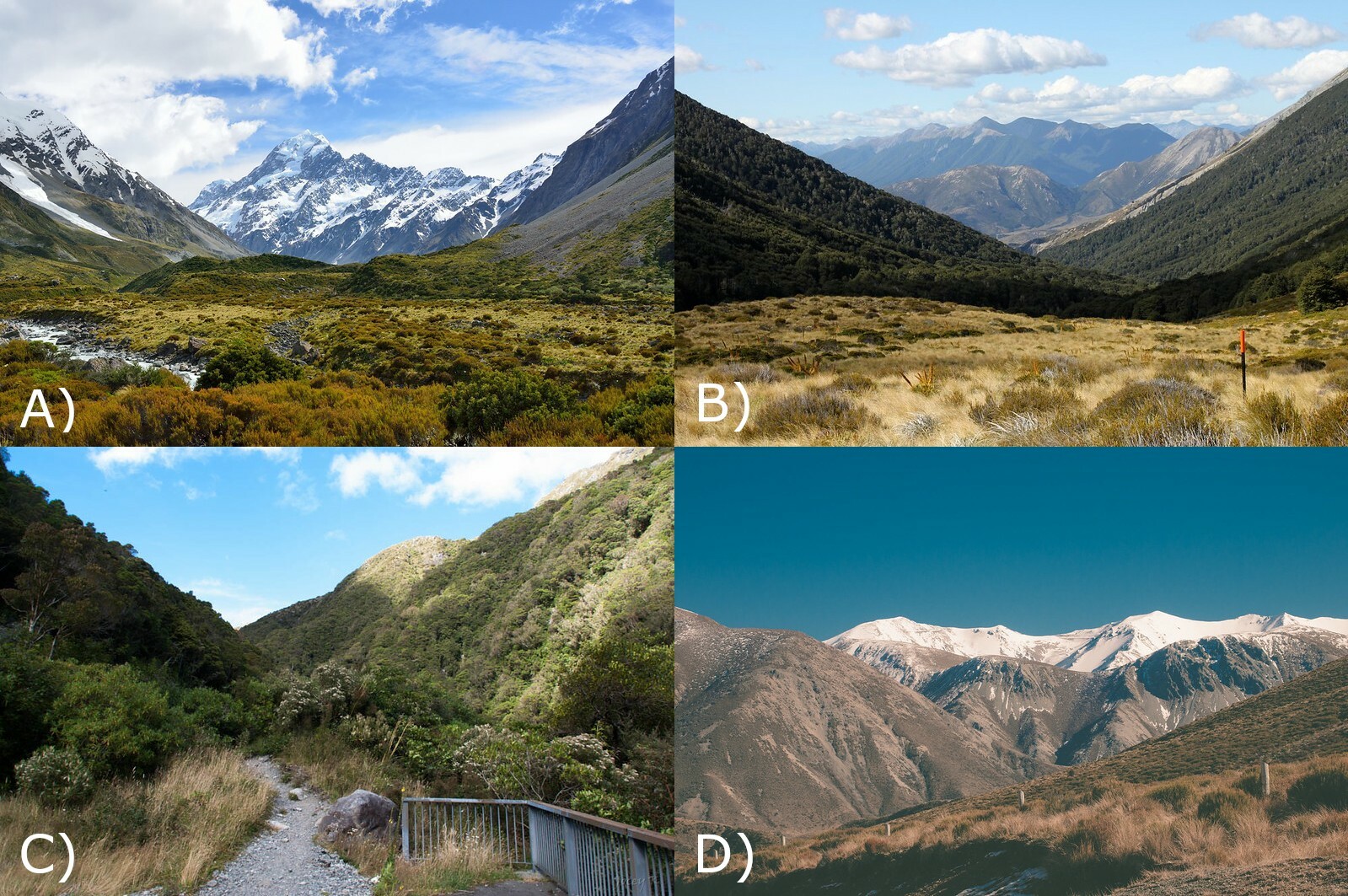
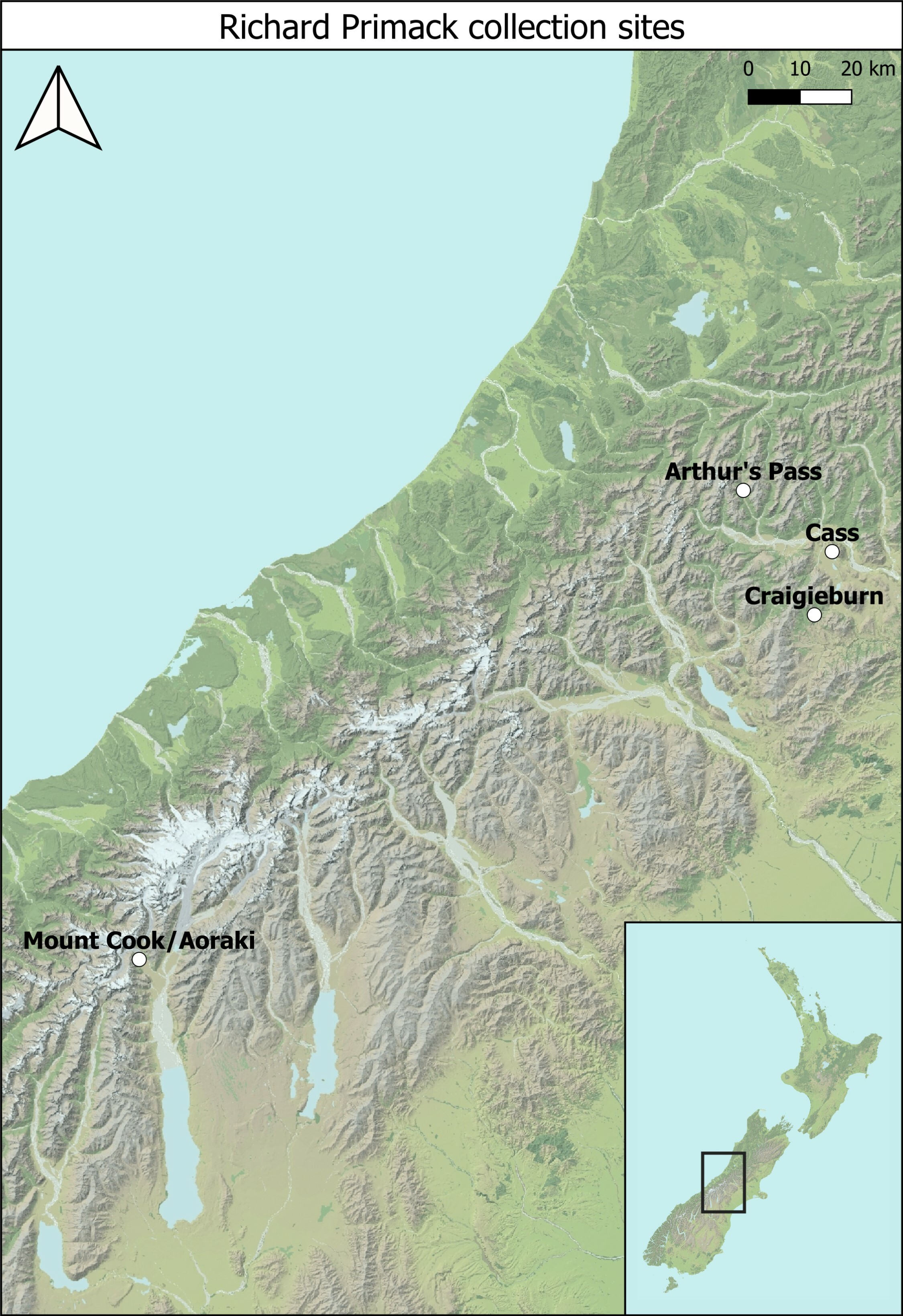
Just over 1,600 insects were collected covering several groups, including predominantly Hymenoptera (native bees), Diptera (hoverflies and blow flies), Lepidoptera (moths and butterflies) and Coleoptera (flower beetles). The bees and flies were the most significant pollinators, retaining significant amounts of pollen on their bodies.
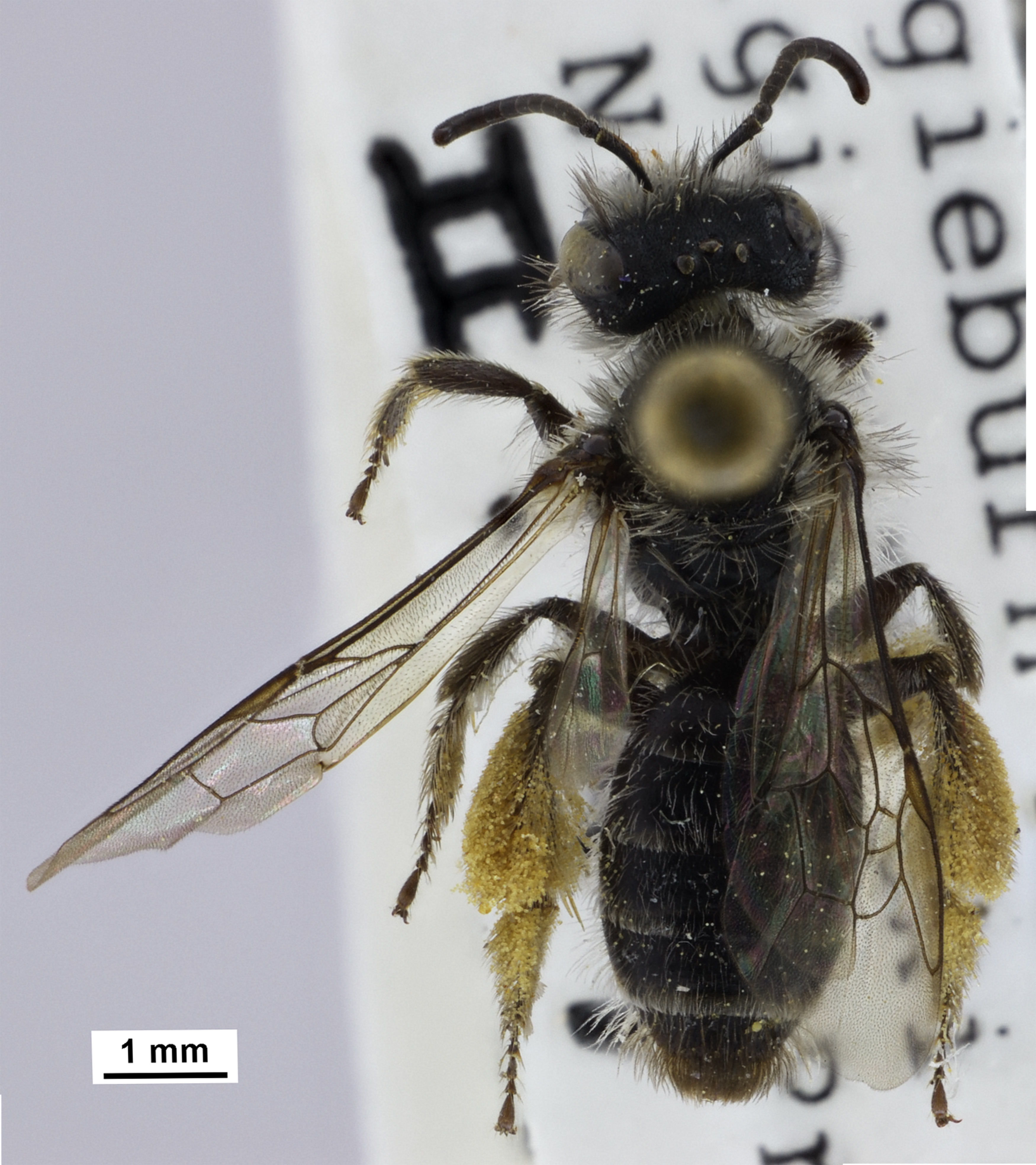
Post-doctoral researcher Marion Donald along with collaborators Manpreet Dhami of Manaaki Whenua Landcare Research, Jamie Stavert of the Department of Conservation, and Berry Brosi of The University of Washington in the United States of America received a grant from the USA-based National Science Foundation to find out what the Primack collection can tell us about pollination networks between 1976 and 1978, and to compare this data to current pollination networks.
Donald is using non-destructive techniques to extract pollen from Primack’s insect collection. Methods for extracting pollen include washing specimens with ethanol to remove pollen, glycerine swabbing and shaking specimens to loosen the pollen from the insects. Minimising the impact on specimens is important, and the safest method of extraction is to use glycerine swabs.

If specimens are damaged or destroyed, they cannot be used for future research. Once a specimen has pollen removed, the pollen is placed in a tube. Depending on the specimen, the pollen will represent a range of plants the insect visited before being collected. The samples then have DNA extracted from the pollen.
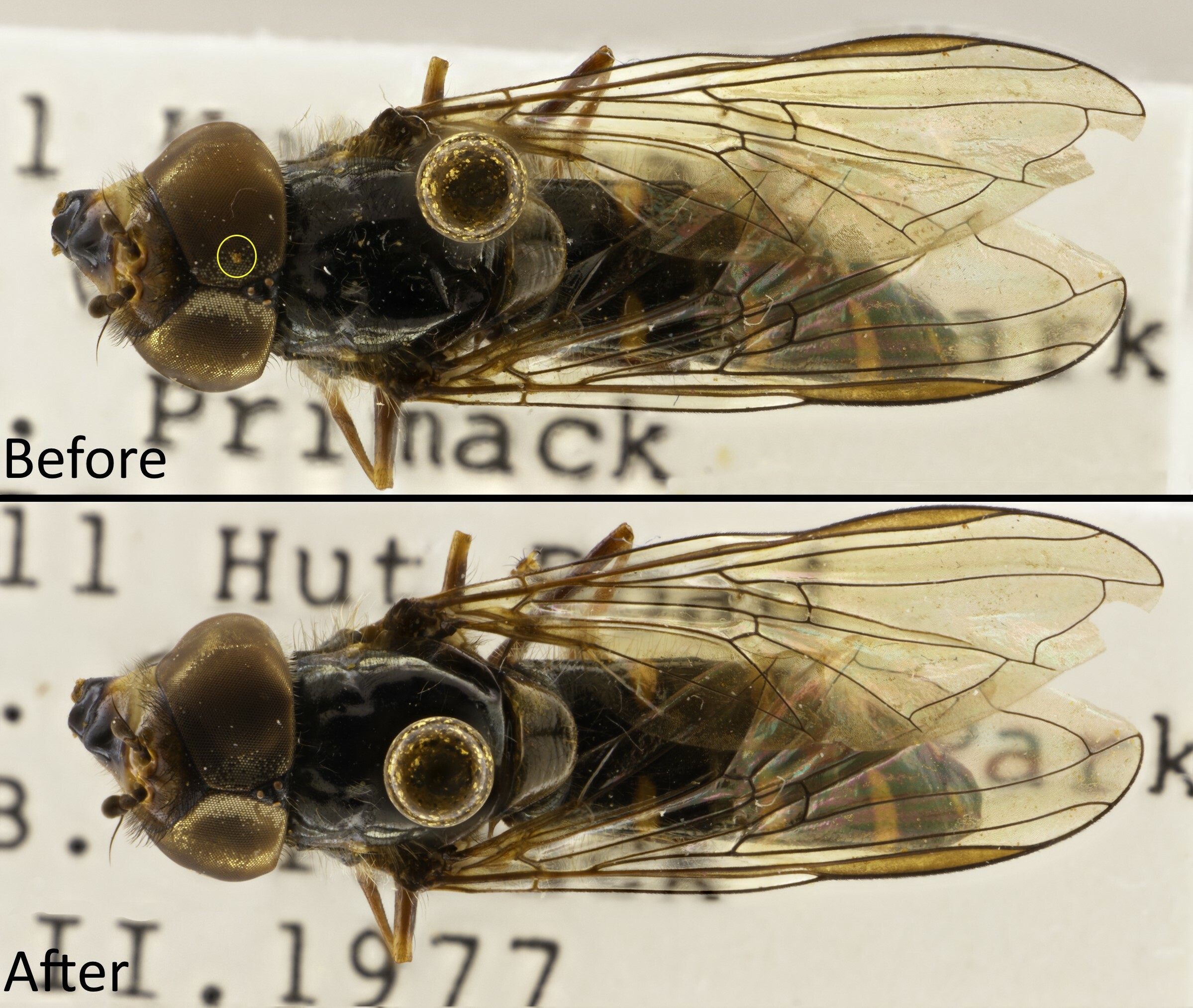
Polymerase Chain Reaction (PCR) is used next to amplify extracted DNA. Amplified DNA will then be sequenced to identify the species of plant based on the pollen. Every specimen sampled will have a list of plants they interacted with when they were alive, based on the sequences of the pollen. A pollination network can then be built to see which plants different insects were interacting with.
A key question for the researchers is how honeybees have impacted these native grassland and shrubland pollination networks. Aotearoa New Zealand has seen a boom in mānuka honey production in the last two decades. Mānuka (Leptospermum scoparium) is a plant native to Aotearoa New Zealand and south-east Australia.
Beekeepers place exotic honeybee (Apis mellifera) hives in areas with mānuka plants to produce honey. Sites originally sampled by Primack may have seen honeybee numbers increase.
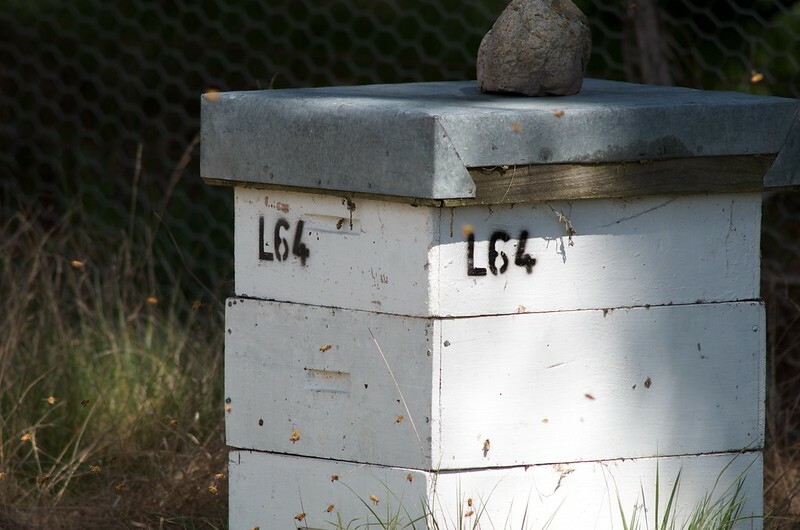
Donald intends to resample pollinating insects from the same sites Primack worked at nearly 50 years ago. Plant species the insects are collected from will be recorded. The insects will then be pinned and identified. These specimens will have pollen extracted and the same process carried out to identify the pollen as described for the Primack collection. A pollination network can then be built for the current time period. Both pollinator networks will be analysed and compared with each other to see how they may be different.
This research shows how natural history collections can be used to answer questions about our environment. In the future, new technologies might be developed which will allow collections to be utilised in other exciting ways. In the 1970s it would have been like science fiction to think you could build a pollinator network from pollen DNA preserved on insects! Physical collections hold so much knowledge yet to be extracted with potential for us to learn so much from them.
This project also shows why it's so important for museums to collect and keep collecting. If Primack had not collected these insects in the 1970s and entrusted their care to Canterbury Museum, the baseline for this work would not exist.





